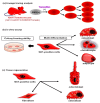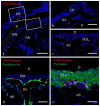Sonic Hedgehog Signaling and Tooth Development
- PMID: 32111038
- PMCID: PMC7084732
- DOI: 10.3390/ijms21051587
Sonic Hedgehog Signaling and Tooth Development
Abstract
Sonic hedgehog (Shh) is a secreted protein with important roles in mammalian embryogenesis. During tooth development, Shh is primarily expressed in the dental epithelium, from initiation to the root formation stages. A number of studies have analyzed the function of Shh signaling at different stages of tooth development and have revealed that Shh signaling regulates the formation of various tooth components, including enamel, dentin, cementum, and other soft tissues. In addition, dental mesenchymal cells positive for Gli1, a downstream transcription factor of Shh signaling, have been found to have stem cell properties, including multipotency and the ability to self-renew. Indeed, Gli1-positive cells in mature teeth appear to contribute to the regeneration of dental pulp and periodontal tissues. In this review, we provide an overview of recent advances related to the role of Shh signaling in tooth development, as well as the contribution of this pathway to tooth homeostasis and regeneration.
Keywords: Gli1; epithelial and mesenchymal interaction; lineage tracing analysis; mesenchymal stem cell; sonic hedgehog; stem cell marker; tooth development.
Conflict of interest statement
The authors declare no potential conflicts of interest with respect to the authorship and/or publication of this article.
Figures



References
Publication types
MeSH terms
Substances
Grants and funding
LinkOut - more resources
Full Text Sources

